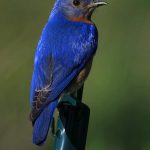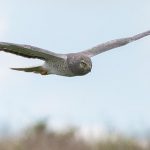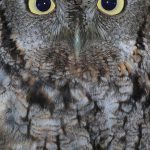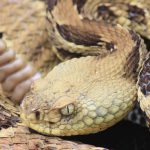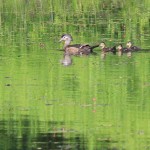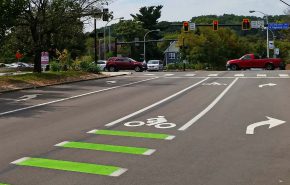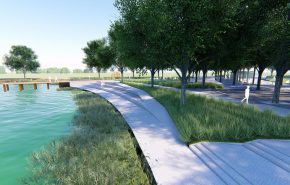In our ‘Get to Know GAI’ series, you’ll hear a range of GAI professionals offer their takes on the current state of the AEC industry, and their inside views of some of the innovative projects that GAI is bringing to life around the United States. GAI’s experienced professionals remain at the forefront, delivering innovative solutions to a range of transportation, industrial, municipal, energy, and development clients.
![]() Today, GAI Vice President George Reese, CE, Power Delivery Environmental Business Sector leader, discusses some of his impressions of how GAI has adapted to the unprecedented health concerns and other factors affecting today’s world, and how he’s continuing to lead his field in providing the advanced engineering services that GAI’s clients demand.
Today, GAI Vice President George Reese, CE, Power Delivery Environmental Business Sector leader, discusses some of his impressions of how GAI has adapted to the unprecedented health concerns and other factors affecting today’s world, and how he’s continuing to lead his field in providing the advanced engineering services that GAI’s clients demand.
Q: Please tell us who you are and describe your area of expertise and what you do at GAI.
George Reese: My name is George Reese, I am a Vice President and the Power Delivery Environmental Business Sector Leader. I am a Certified Ecologist, and my primary focus at GAI is the siting and permitting of electric transmission facilities and conducting environmental and endangered species studies.
Q: How has the pandemic evolved the way GAI and your group operate?
George: Bat surveys are an environmental service we provide in which GAI bat biologists perform studies of a given project area for rare, threatened, and endangered bat species in order to help clients avoid, minimize, or mitigate habitat impacts to satisfy state and federal agency requirements. One major impact on our project activities involved changes to bat survey protocols due to the pandemic.
GAI’s teams of bat biologists are busy each year from May to August conducting ‘mist net’ surveys for a number of endangered species of bats. In response to the pandemic, however, mist netting (and any other activity involving the handling of bats) was prohibited in most areas in 2020. Wildlife regulatory agencies recognized that if bats are exposed to the COVID-19 virus through interaction with humans, the potential exists to infect and transmit the virus among bat populations. Therefore, bat-handling activities were temporarily suspended until more became known about the risk.
For bat surveys, clients rely on presence/absence surveys such as mist netting to facilitate the environmental permitting process. In lieu of mist netting, the wildlife regulatory agencies also allow the use of acoustic surveys, which do not involve handling of bats. Under normal circumstances, mist net surveys are generally preferred due to their better and more extensive data collection capabilities. Out of necessity, we focused our 2020 bat survey efforts largely on conducting acoustic surveys. To facilitate this, we purchased additional acoustic equipment and software, and staff were trained in methods for analyzing the large volumes of data collected. Thus, we were able to help our clients keep critical project schedules on track in the face of an unexpected obstacle. We are optimistic that bat-handling surveys will resume in 2021.
Q: What are you working on right now that you’re excited about?
George: We have several projects that involve units of the National Park system—those are always interesting assignments.
Q: Did you take up any new hobbies during the pandemic?
George: I can’t say that I have taken up anything new, since I already dabbled in too many hobbies before the pandemic started. However, the pandemic has enabled me to spend some more time on those. Wildlife photography is one of my main interests, and I was definitely able to spend more time photographing the creatures on our property this year.
Click the images below to enjoy some of George’s wildlife photography.
Q: What do you foresee for the AEC industry in 2021?
George: I think that the pandemic has demonstrated the capabilities of the technologies we have available to facilitate working remotely, and I believe that remote work will continue to some degree in our post-pandemic operations. Similarly, I think that we’ll also continue to see a move toward more virtual versus in-person interactions with clients, consultants, and the public, and that we’ll continue to deploy new technologies to facilitate this move. Regarding the Power Delivery Environmental practice, I expect that transmission investment will continue to be strong as utilities work to address changing generation sources and provide for enhanced grid resiliency and reliability—that hasn’t changed.
For more information about the full range of GAI’s environmental services for the power industry, contact George Reese, CE, 412.399.5214. Message GAI online and start the conversation about how our multidiscipline professionals can meet your unique project needs.
![]() George Reese, CE specializes in environmental impact analysis and National Environmental Policy Act documentation, permitting, siting studies, and vertebrate ecology. His ecological specializations are in the areas of population, community, and behavioral ecology. George has extensive experience in the design of replacement wetlands and habitats, and he has performed endangered and threatened species surveys throughout the eastern United States, including designing and developing measures to mitigate impacts to species of concern.
George Reese, CE specializes in environmental impact analysis and National Environmental Policy Act documentation, permitting, siting studies, and vertebrate ecology. His ecological specializations are in the areas of population, community, and behavioral ecology. George has extensive experience in the design of replacement wetlands and habitats, and he has performed endangered and threatened species surveys throughout the eastern United States, including designing and developing measures to mitigate impacts to species of concern.
